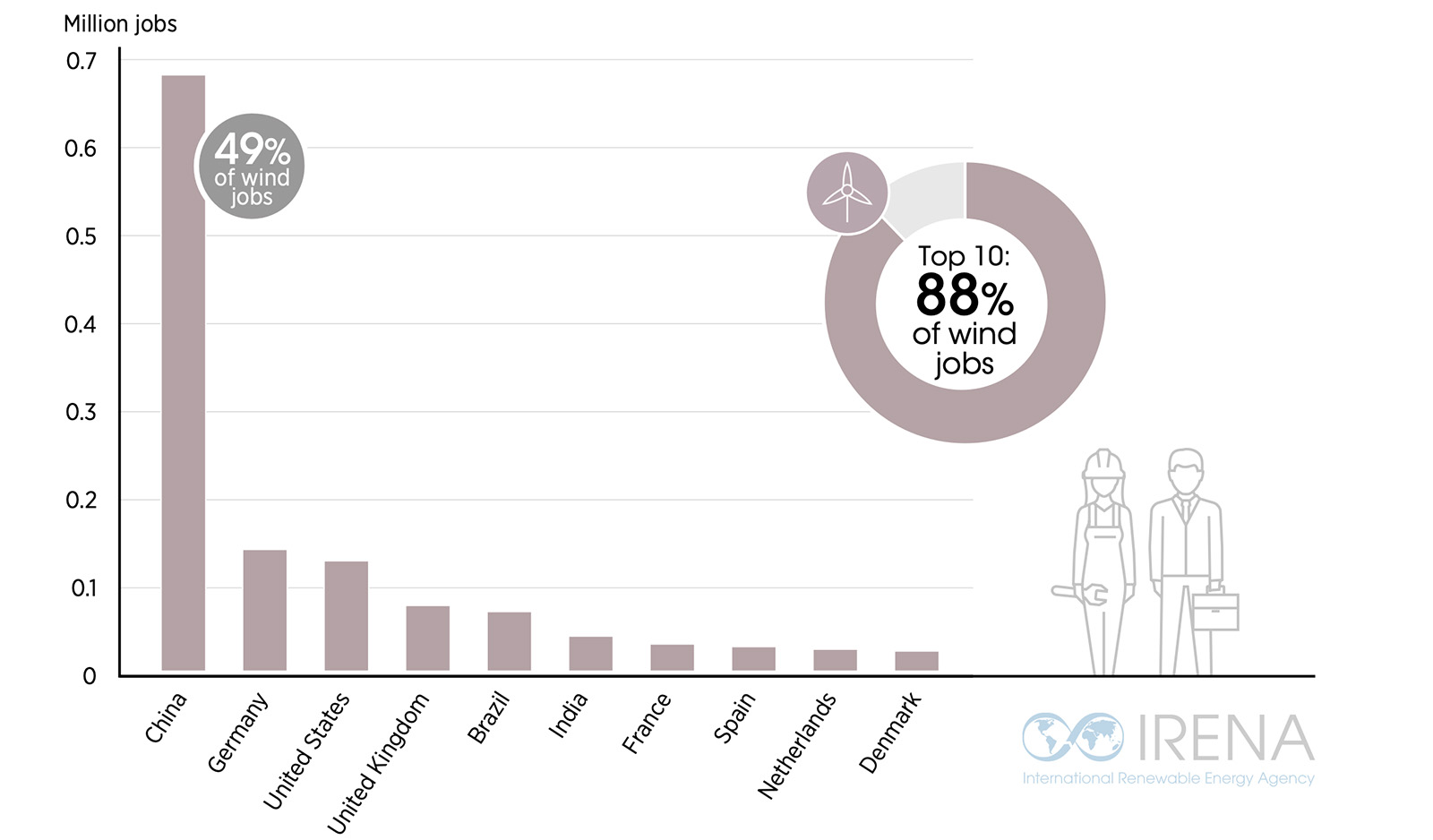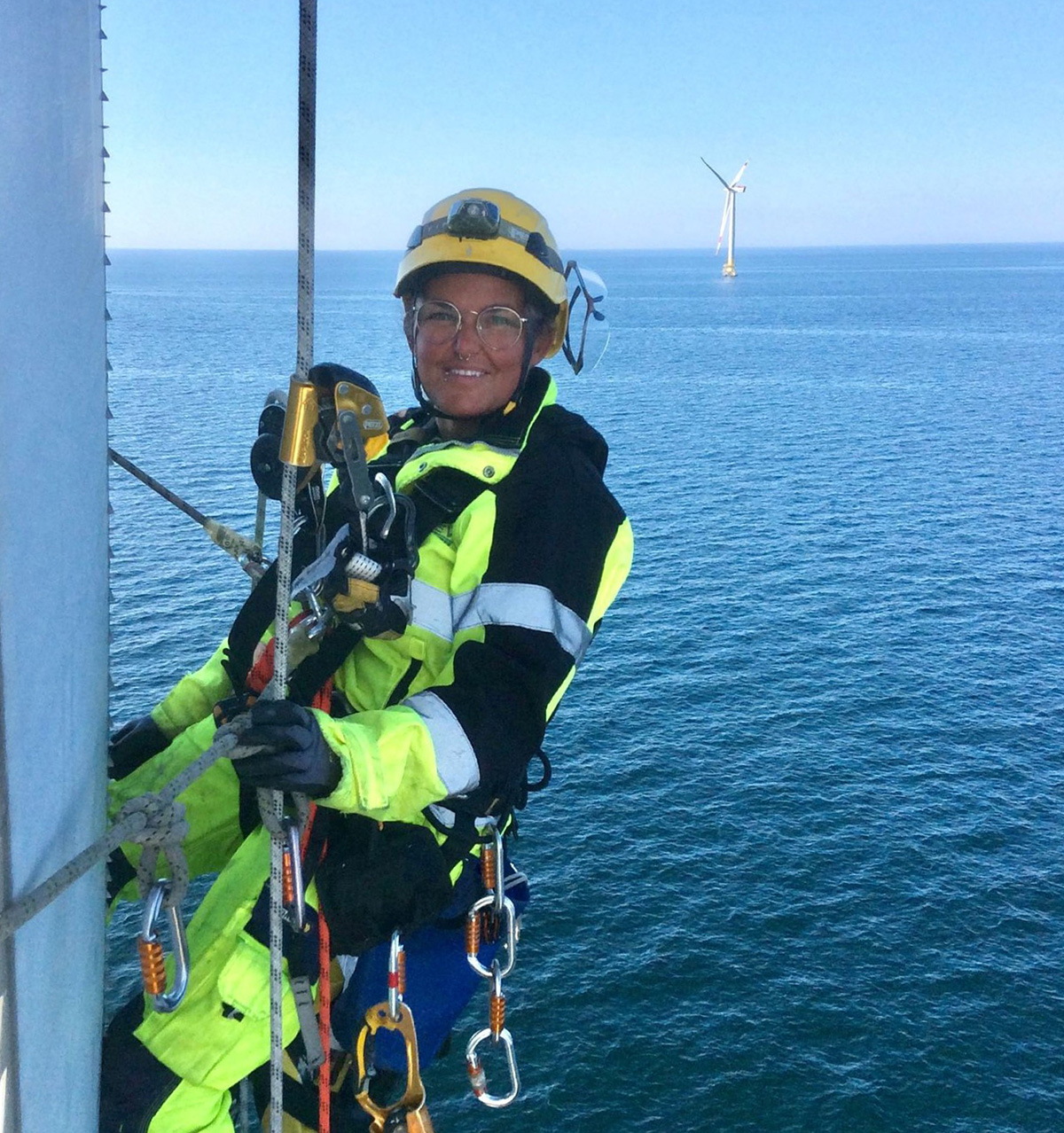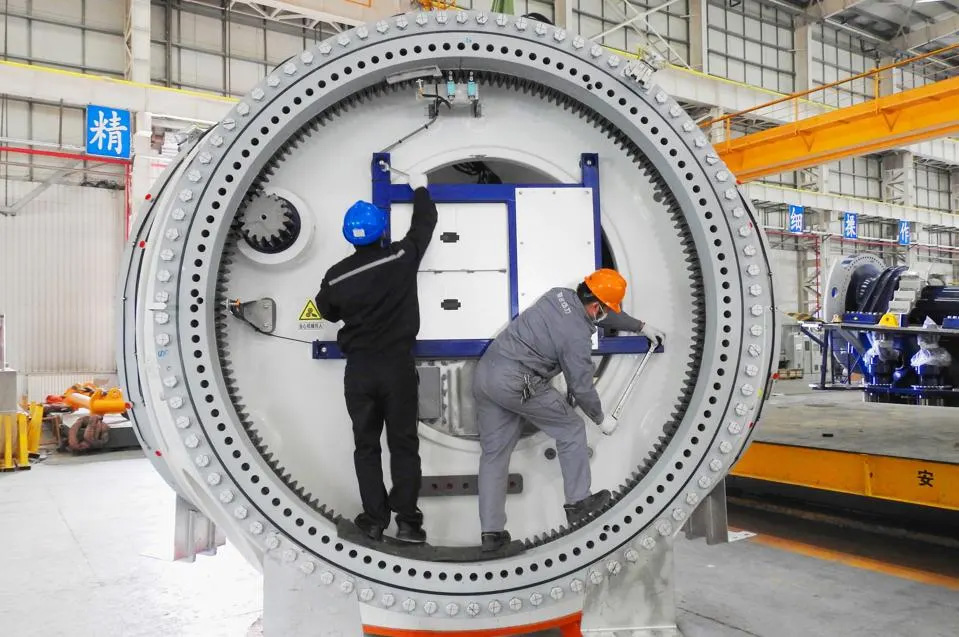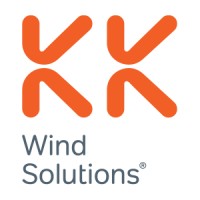Explore Wind Energy Jobs
Wind energy is a huge part of the renewable energy sector, offering stability, growth and a significant opportunity for those looking to move into a field that makes a tangible impact on the environment. Air isn't just for breathing anymore! Wind turbines, both onshore and offshore, often operate at maximum capacity at times when solar power is less effective, such as at night or when it is cloudy. Offshore wind turbines, in particular, are known for their high efficiency due to stronger and more consistent winds at sea, generating peak power for an average of 12 to 16 hours a day.

Job Market Overview
The wind energy sector employed 1.4 million people worldwide in 2022 and continues to grow. Wind energy jobs are concentrated in a relatively small number of countries, with China accounting for 48% of global wind employment, Europe accounting for 29% (mainly Germany, UK, Denmark, Netherlands, France and Spain), followed by the Americas with 16%.
In 2022, the wind sector installed 75 GW of new capacity and in 2023, 117 GW of new wind power was commissioned! The authors of the Global Wind Report warned that the wind industry must increase its annual growth to at least 320 gigawatts by 2030 in order to meet the COP28 commitment to triple the world's installed renewable energy capacity by 2030.
On average, the installation of 1 GW of onshore wind capacity (equivalent to a single nuclear reactor) could create 130,000 jobs in development, construction and installation over five years and 12,000 jobs per year during the 25-year operation and maintenance phase (GWEC, 2022).

Skills and Qualifications Needed
Moving into the wind energy sector requires a mix of technical skills, industry knowledge and certifications. Here are some of the key skills that can help you succeed:
- Technical skills: Essential for roles such as wind turbine technicians and engineers, technical skills include electrical and mechanical engineering, hydraulics and control systems. Familiarity with turbine diagnostics and maintenance software is becoming increasingly important.
- Transferable skills: Experience from industries such as oil and gas, construction or manufacturing can be valuable. Skills in project management, troubleshooting and operating heavy machinery are highly transferable.
- Certifications: Obtaining industry-specific certifications such as GWO (Global Wind Organisation) Basic Safety Training is essential, especially for roles that involve working at height or offshore. Additional certifications in electrical safety or specific turbine models can also enhance employability.
- Educational background: A degree in renewable energy, engineering or environmental science is an advantage. However, vocational training programmes specifically designed for wind energy roles, such as wind turbine technician courses, are also highly valued.
Careers in Wind Energy
The wind industry offers diverse career opportunities at various stages of the project lifecycle:
Development and project management: These roles involve planning, permitting and overseeing the construction of wind farms. Project managers ensure that projects are delivered on time and within budget, while development specialists deal with regulatory and environmental issues. This route often requires strong project management skills and experience in navigating complex regulations.

Engineering and design: Engineers in the wind sector focus on designing and optimising wind turbines and associated infrastructure. Offshore wind farms in particular require complex engineering solutions, including the design of foundations, substations and cables. These roles require a high level of expertise and are critical to the advancement of wind technology.
Operations and Maintenance (O&M): Once operational, wind farms require ongoing maintenance to ensure efficiency and longevity. O&M technicians perform routine inspections, troubleshooting and repairs. Offshore wind farms, due to their complexity, place even greater demands on the workforce in this area. These positions often require a mix of mechanical, electrical and diagnostic skills.

Career Growth and Advancement
Wind energy offers significant opportunities for career progression:
- Entry-Level Opportunities: Typical entry-level positions include wind turbine technicians and site supervisors. These positions provide hands-on experience and are excellent stepping stones to more advanced roles.
- Advancement Opportunities: With experience, professionals can move into supervisory roles such as lead technician or site manager. Further progression can lead to positions in project management, engineering management or operations management.
- Specialisation: There are also opportunities to specialise in areas such as offshore wind, blade repair or turbine installation. Specialisation can lead to higher pay and job security.
Working environment and conditions
Working in the wind energy sector can be physically demanding and often involves working in challenging environments:
- Onshore vs. Offshore: Onshore wind jobs are generally more accessible and involve working on land-based wind farms. Offshore jobs, while often better paid, involve working on offshore wind farms. These positions can require long periods away from home and involve working in harsh weather conditions.
- Safety considerations: Safety is paramount in the wind energy industry. Workers, particularly those in offshore and high-altitude roles, must undergo rigorous safety training and adhere to strict safety protocols to prevent accidents and ensure operational efficiency.
Salary Insights
Salaries in the wind energy sector vary depending on the role, level of experience and location. Below is a comparison of salary ranges in the United States (US), United Kingdom (UK) and Germany (DE):
| Role | US | UK | DE |
|---|---|---|---|
| Wind Turbine Technician | $59,000 - $84,000 | £30,000 - £44,000 | €37,000 - €65,000 |
| Site Manager | $79,000 - $118,000 | £39,000 - £61,000 | €41,000 - €73,000 |
| Operations Manager | $108,000 - $151,000 | £42,000 - £64,000 | €49,000 - €85,000 |
Fig 2 - Salaries in the wind energy industry. Source: glassdoor.co.uk 2024
Making an Environmental Impact
Wind energy is a key part of the global strategy to reduce carbon emissions and combat climate change. Every wind energy job contributes to this mission by supporting the generation of clean, renewable energy.
Below you will find the latest wind energy jobs listed on Rejobs.
Sign up to our newsletter for updates!

